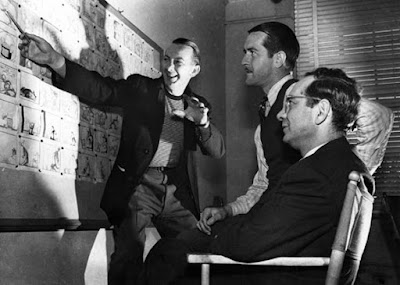The final episode of my two-year animation project, “A Universe of Trouble," was uploaded on Tuesday, July 4, 2017.
A few stats: the entire project was 341 scenes. 221 of those were done in Toon Boom Animate Pro. 120 were done in Toon Boom Harmony (my computer died and I was forced to upgrade.) Episode 12 had the most scenes, 32 (the first 4 done in Animate Pro, the remaining 28 in Harmony). Episode 3 had the least number of scenes, 9.
Two years of sacrificing: time with loved ones, hanging out, relaxing, having fun, reading and exercising.
Two years of a single-minded focus.
Admittedly, once it was over, I felt deeply relieved that it was out of my system, completely drained and even a little lost. That’s why I haven’t addressed the completion of the project until now.
So here we go!
Towards the end of the project, I began to have second-thoughts about the decision to dedicate two years to a project instead of spending that time on desperately-needed skills improvement. After briefly beating myself up over this, I came to these conclusions:
- Although I knew that I needed to improve my skills, it was impossible for me to consistently focus on this task because I kept telling myself that I needed to complete a project! Ugh, you can’t have it both ways, Rochelle! It was EITHER focus 100% on skills improvement or focus 100% on a project. There was no way to do both simultaneously. Since doing a project kept gnawing at my mind and prevented me from focusing completely on drawing practice, I decided to satisfy the project-completion hunger.
- The project clearly revealed my weaknesses which will make focusing and consistency on skills improvement easier. In the past when I tried to do skills improvement, after a few days of dull exercises and drills, I would second-guess if I was focusing on the right or best drills and exercises and topics. This further distracted from actually improving any skills! It became clear during the creation of this project that I need to learn anatomy and perspective if I’m to create and share all of the cool stuff floating around in my mind!
- The project gives me something to talk about at industry gatherings. At my first Women in Animation (WIA) event since completing the project, I was able to tell people about my project and hand out business cards directing them to where they could see the project.
So ultimately, YES, spending two years working on an imperfect project WAS the a better use of my time rather than lackluster skills improvement!
In addition to becoming clear about my weaknesses and the areas I should focus my study upon, I learned what I should not skimp on for the next animated project: everything (characters, props, environments, colors) should be designed/determined in advance to maintain consistency; do color scripts in advance to ensure characters and background are distinct; make model sheets and turnarounds to make the drawing process faster; create texture swatches for everything (skin, hair, etc.); depending upon the clip, add an extra 2 secs. at the beginning and/or end for easier editing.
I’m proud of “A Universe of Trouble.” I love the story, I’m proud of the results and I’ve gotten great feedback about it. I’m going to take the lessons I learned from this experience and apply them towards becoming a better artist.




























